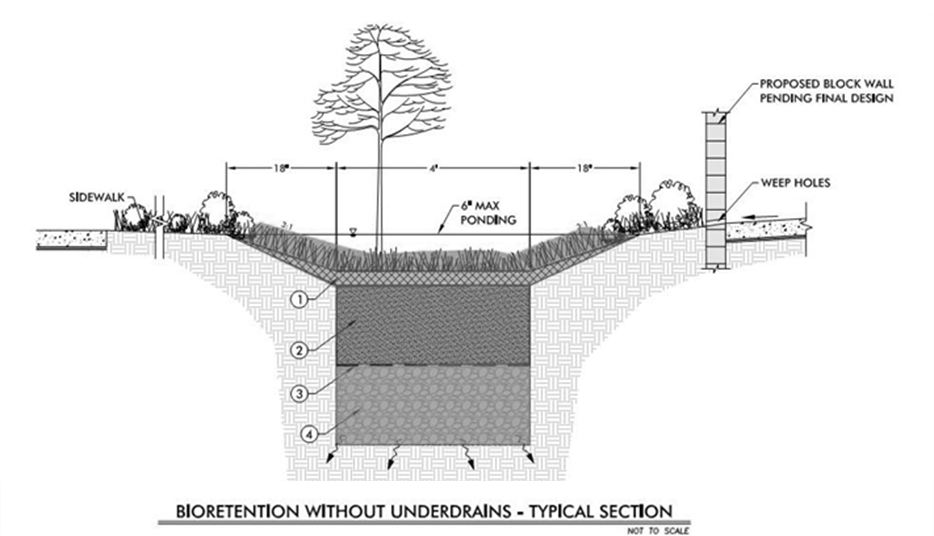The Eco-efficiency Model for Outdoor Environmental Design of the Mixed-use Real Estate Development in Bangkok, Thailand
Main Article Content
Abstract
Nowadays, the dramatically of urban land developments affect to various of environmental problems, especially in urban heat and the reduction of natural porosity surfaces, then increasing of outdoor temperature and surface water runoff problems. These problems relate to urban residents outdoor living, especially in the large mixed-use real estate developments in Bangkok; the capital city of Thailand. Therefore, the development concerned on mitigating such problems by applying the eco-efficiency modeling to use as a sustainable design guideline for the new project development. The term of eco-efficiency is defined as the ratio of improvement cost per unit of the environmental impacts. This study formulates the eco-efficiency model by using the change of construction cost of outdoor environmental and their impacts which refer to the Physiological Equivalent Temperature (PET) as indicator for thermal comfort index of humans and stormwater runoff. The cost is calculated by simple cost estimation technique. Meanwhile, the microclimate model ENVI-met BioMet (V4) was used for predicting the effect different design options on outdoor thermal comfort using PET, and the Stormwater Runoff Test (SRT) is also calculated by the academic Green Stormwater Infrastructure (GSI) for Autodesk Infraworks 360 software. The results present as the prediction function of the eco-efficiency of the outdoor environmental design. Research suggests that pervious paving materials are broadly capable of lowering temperatures and improving human thermal comfort, and when integrated with trees have potential to meet eco-efficiency objectives. Moreover, the models can be used as the useful guideline for outdoor environmental design to toward the eco-friendly for urban residents’ outdoor living of mixed-use real estate development in Bangkok, Thailand. KeywordsEco-efficiencyWater SensitiveOutdoor Thermal ComfortPhysiological Equivalent Temperature (PET)Stormwater RunoffSimulation
Downloads
Article Details

This work is licensed under a Creative Commons Attribution-NonCommercial-NoDerivatives 4.0 International License.
All material is licensed under the terms of the Creative Commons Attribution 4.0 International (CC-BY-NC-ND 4.0) License, unless otherwise stated. As such, authors are free to share, copy, and redistribute the material in any medium or format. The authors must give appropriate credit, provide a link to the license, and indicate if changes were made. The authors may do so in any reasonable manner, but not in any way that suggests the licensor endorses you or your use. The authors may not use the material for commercial purposes. If the authors remix, transform, or build upon the material, they may not distribute the modified material, unless permission is obtained from JARS. Final, accepted versions of the paper may be posted on third party repositories, provided appropriate acknowledgement to the original source is clearly noted.
References
Boonmee, K. (2005). Eco-efficiency and competitiveness - State-of-the-art and perspectives in Thailand. Bangkok, Thailand: German Technical Cooperation (GTZ)
Chappell, E. (2015). Autodesk drainage design for infraWorks 360 essentials. John Wiley & Sons.
Höppe, P. (1999). The physiological equivalent temperature – a universal index for the biometeorological assessment of the thermal environment. International Journal of Biometeorology, 43(2), 71-75.
Huppes, G., & Ishikawa, M. (2005). A framework for quantified eco-efficiency analysis. Journal of Industrial Ecology, 9(4), 25-41.
Jaber, F., Woodson, D., LaChance, C., & York, C. (2012). Stormwater management: Rain gardens. Texas A&M Agrilife Extension.
Klaylee, J. (2015). The assessment of physical design for outdoor thermal comfort: Case study of Thammasat University (Rangsit Center) (in Thai). Thammasat University, Patumthani.
Lehni, M., & Pepper, J. (2000). Eco-efficiency creating more value with less impact. Geneva, Switzerland: World Business Council for Sustainable Development (WBCSD).
McCuen, R. H., & Bondelid, T. R. (1981). Relation between curve number and runoff coefficient. Journal of the Irrigation and Drainage Division, 107(4), 395-400.
Rinchumpoo, D. (2012). The rating tool of subdivision neighbourhood sustainability design (SNSD) for Bangkok Metropolitan Region (BMR), Thailand: An eco-efficiency modelling approach. Brisbane, Queensland, Australia: Queensland University of Technology.
Shonnard, D. R., Kicherer, A., & Saling, P. (2003). Industrial applications using BASF eco-efficiency analysis: Perspectives on green engineering principles. Environmental Science & Technology, 37(23), 5340-5348.
Simion-Melinte, C. (2016). Factors influencing the choice of cost estimates types and the accuracy of estimates for construction projects. Paper presented at the Proceedings of the International Management Conference.
Sorvari, J., Antikainen, R., Kosola, M.-L., Hokkanen, P., & Haavisto, T. (2009). Eco-efficiency in contaminated land management in Finland – Barriers and development needs. Journal of Environmental Management, 90(5), 1715-1727.
Srivanit, M., & Selanon, P. (2017). GIS-based land suitability analysis to support Transit-Oriented Development (TOD) master plan: A case study of the campus station of Thammasat University and its surrounding communities. International Journal of Building, Urban, Interior and Landscape Technology; BUILT, 9, 49-60.
Sukul, C., Rinchumphu, D., & Suttiwongpan, C. (2017). The study of runoff efficiency in the garden area of middle tier housing project in Bangkok and vinicity provinces (in Thai). Paper presented at the ICMSIT 2017: International Conference on Management Science, Innovation, and Technology 2017, Faculty of Management Science, Suan Sunandha Rajabhat University.
Suropan, P., Rinchumphu, D., & Srivanit, M. (2017). The study of eco-efficiency from outdoor thermal impacts for hi-end condominium project in central business district of Bangkok (in Thai). Paper presented at the The National Conference on “Vernacular Creativity Wisdom”, Faculty of Architecture, Chiang Mai University.
Thitisawan, N. (2009). Guidelines for materials selection to enhance post-occupancy satisfaction and reduce environment impact in common area of middle tier single detached house projects (in Thai). Thammasat University, Bangkok, Thailand.
Whizdom101. (2019). The whizdom101. Retrieved April 20, 2019, from https://www.mqdc.com/whizdom101/.


